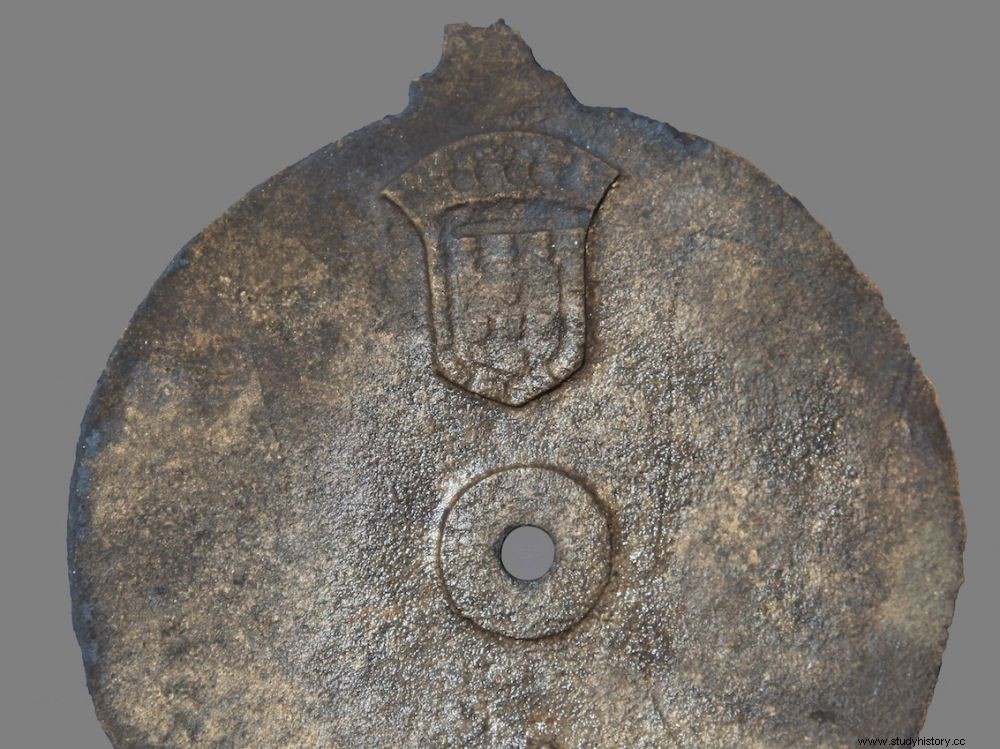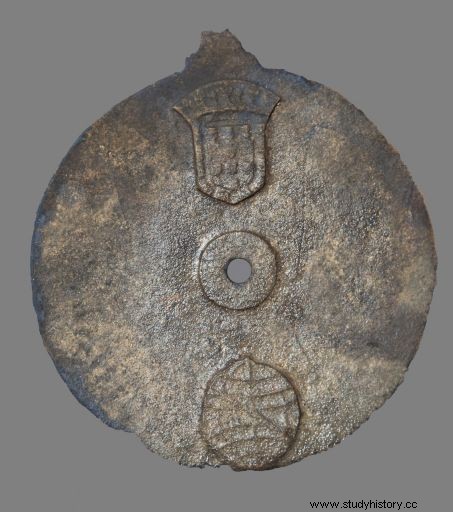This navigational instrument from the end of the 15th century was discovered off the coast of Oman, on the wreck of the Esmeralda, a ship of Vasco da Gama's second expedition.

A photo of an astrolabe, the oldest ever discovered
A UK-based shipwreck hunter claims to have found the oldest known nautical astrolabe, a navigational instrument that guided Portuguese explorers on a perilous voyage to India in the early 16th century. David Mearns told AFP he found the 17.5cm diameter bronze disc while diving on a wreck off the coast of Oman in 2014 but explained that the University of Warwick had only just identified the object, after scanning it. "Scans revealed etchings around the edge of the object, each separated by 5 degrees - proving it was an astrolabe. These markings would have allowed sailors to measure the height of the sun above the horizon at noon to determine their latitude and find their way on the high seas ", the university said in a statement.

The astrolabe. © David L. MEARNS / BLUE WATER RECOVERIES / AFP
"It was fantastic to use our 3D scanners for such an exciting project and help identify such a rare and fascinating object ", testified Professor Mark Williams, who conducted the analyzes. "When I saw it, I knew immediately that it was a very, very important object. I saw royal coat of arms on it ", explained David Mearns. "It is the oldest nautical astrolabe ", according to this American living in the United Kingdom, dating it between 1496 and 1500, about 30 years earlier than the oldest astrolabe then known.
Mearns' company, Blue water recoveries, found the wreckage in 1998 but only began excavating it in 2013, in conjunction with Oman's Ministry of Culture. According to Davis Mearns, the wreck is that of a ship called the Esmeralda, which was part of Vasco da Gama's second expedition to India in 1502-1503 and whose captain was the explorer's uncle. Vasco da Gama was the first European to reach India by sea in 1498, a discovery that ushered in a period of colonization and trade between Europe and Asia. The astrolabe bore the personal emblem of King Manuel I of Portugal, who came to the throne in October 1495. "The Portuguese were at the forefront of developing astrolabes at sea. The oldest reference of their use at sea dates from around 1480 ", explained David Mearns. His find has been placed in the National Museum of Oman
